Last updated on December 2nd, 2024 at 01:19 pm
Quality cabinetry, constructed with high-end materials, is easy to spot. When installed with proper design and functionality you can expect cabinets to increase the overall value (listing price) of your home.
Basics
The “value” is not just about the aesthetic appeal of the cabinets, it’s a combination of the quality, durability, design, and how it complements the home’s overall décor style. A carefully selected set of cabinets can indeed maintain the value they add to your home for years to come.
Here are a few factors that affect how cabinets hold their added value:
- Material: Cabinets made of high-quality, durable materials like hardwoods resist wear-and-tear over time. Their natural beauty and toughness not only appeal to homeowners but also potential buyers.
- Craftsmanship: Well-crafted cabinets not only look good but also function effectively, offering smooth operation and ample storage. Longevity is a key attribute that home evaluators consider.
- Design: The design of the cabinets plays a significant role as well. Timeless styles with neutral tones tend to appeal to a wider range of people and maintain their value.
- Maintenance: Regular care and maintenance go a long way in preserving the value of your cabinets. Cleaning them regularly and addressing any minor issues quickly can keep them looking and functioning well for years to come.
Not All Cabinets Add Value
Choosing between timeless and trendy designs is a choice you’ll need to make when choosing to install new cabinets. While it can be tempting to go with the latest trends when remodeling your new kitchen, you want to keep the end game in mind; will your kitchen still be desirable 10 years down the road? Timeless designs offer durability, maintaining their appeal and functionality over many years. Traits of a timeless kitchen include neutral colors and simple classic lines, which appeal to a broader audience. This broad appeal is key when it comes time to sell your home. Most buyers gravitate towards timeless designs as they tend to be more appealing and less likely to need immediate updates.
Timeless Vs Trendy
Trendy designs, characterized by popular, current styles, can give your kitchen a fresh, modern look. They can make your kitchen stand out and can be particularly attractive if they align with the tastes of the current home buyer market. However, trends change quickly, and what’s in style today may be seen as outdated in a few years. That can affect the long-term value that these cabinets add to your home. You may also find that their appeal is more limited, as trendy designs may not match everyone’s taste.
So, when choosing between timeless and trendy, it’s important to balance your personal style and preferences with the consideration of how well the design will hold up over time. If you plan to stay in your home for a long time, choose what makes you happy. If you’re thinking of selling in the near future, leaning towards timeless might be the safer bet. Either way, quality materials and craftsmanship should always be a top priority for maintaining value.
Let’s take a more detailed look into the factors of kitchen cabinetry that affects your home’s value.
Construction Of The Cabinets
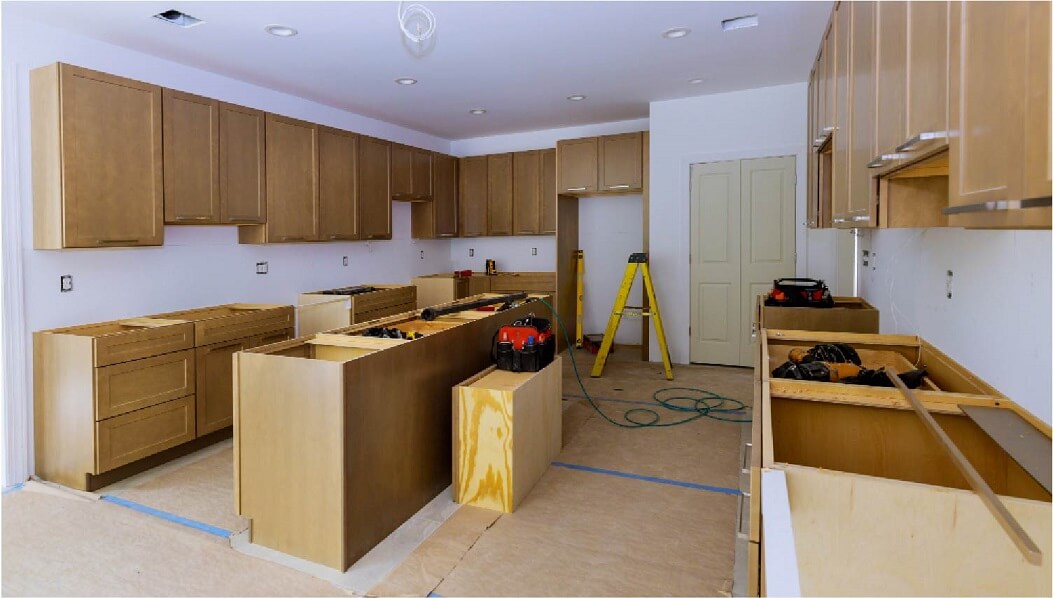
Use of quality construction materials such as hardwood and plywood are the biggest factors that ensure cabinets will last.
Here’s a few other common traits of well-constructed cabinetry:
- Joinery: Strong joinery techniques, such as dovetail joints, provide additional strength and longevity to the cabinets. High-quality cabinets usually don’t include glue, nails, or staples, which can weaken over time.
- Drawers and Doors: Cabinets should have solid, well-constructed doors and drawers. They should open and close smoothly, fit snugly when closed, and not sag or appear crooked. The presence of soft-close features and full-extension drawer slides enhances the functionality and perceived value of the cabinets.
- Hardware: High-quality hardware, such as hinges and drawer slides, is an indicator of good construction. The hardware should function smoothly and be capable of supporting the weight of dishes and cookware.
- Finishing touches: The finish of the cabinets should be smooth and even, without blotches or streaks. It should also be durable enough to resist scratches, chips, or fading over time.
It’s worth mentioning, kitchen cabinets should be professionally installed for durability reasons and to ensure a proper fit and function. While it may be tempting to save money by ordering RTA (Ready-To-Assemble) cabinets and install them yourselves; installing kitchen cabinets is an art and it’s harder than it looks.
Type Of Cabinets
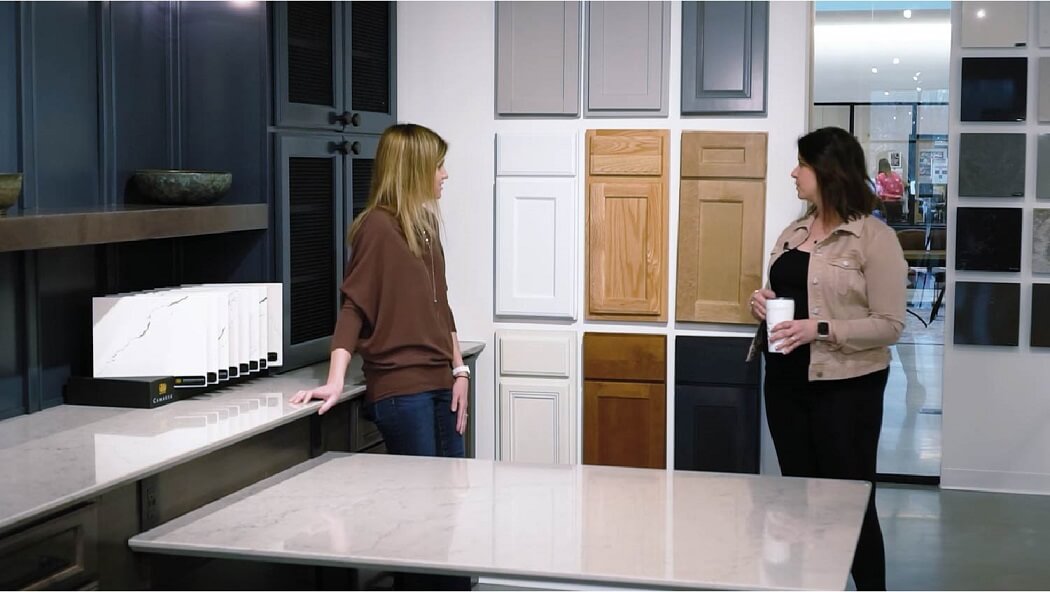
The type of cabinetry chosen also affects the overall value of a home. Custom cabinetry allows for more flexibility in style and layout, while stock cabinetry is often less expensive but more limited in terms of design options. If custom cabinets aren’t an option, it may make sense to choose higher-quality stock cabinets with better construction materials and finishes. In addition, choosing eco-friendly or green materials like bamboo or recycled wood can help raise the value of your home.
Another aspect is choosing custom cabinetry over stock cabinets that can offer specialized amenities you don’t get with stock cabinets. Built-in convenience including pull-out pantries, spice racks, and rotating cabinets further increase the convenience factor and appeal of custom cabinet features. These little details have a big impact on maximizing storage without sacrificing functionality or visual aesthetics.
Below are some of the most common cabinet styles and everything you need to know about traits of various cabinets.

Automatic Touchless Cabinets

Inset Cabinets
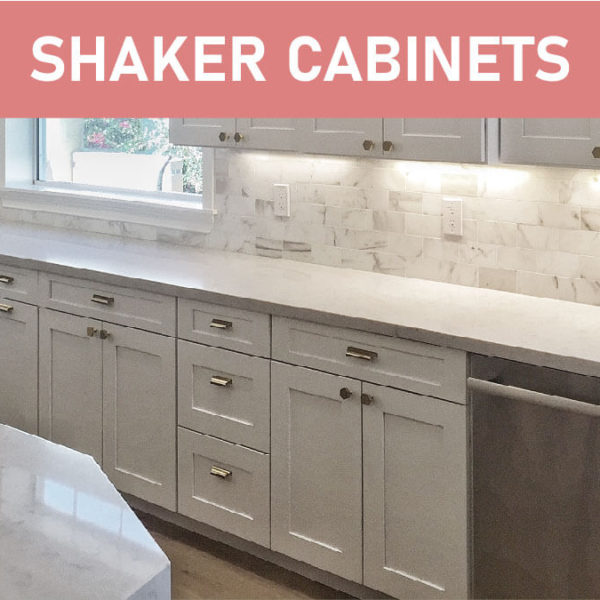
Shaker Cabinets

Flat Panel & Slab Cabinets
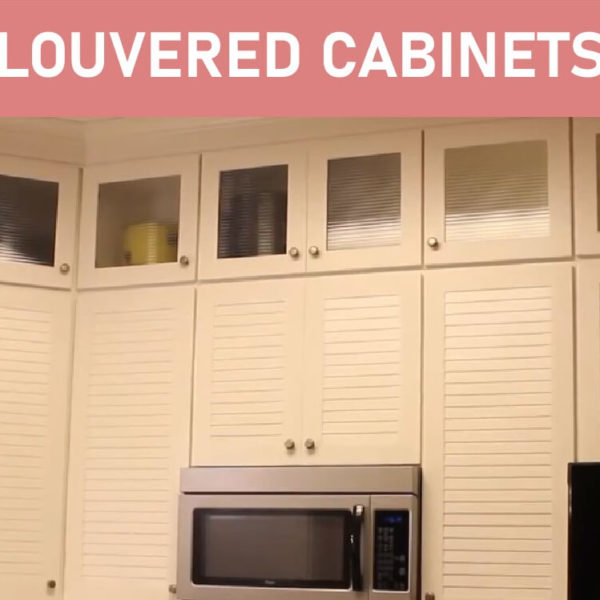
Louvered Cabinets

Thermofoil Cabinets
The Functionality Of The Cabinets
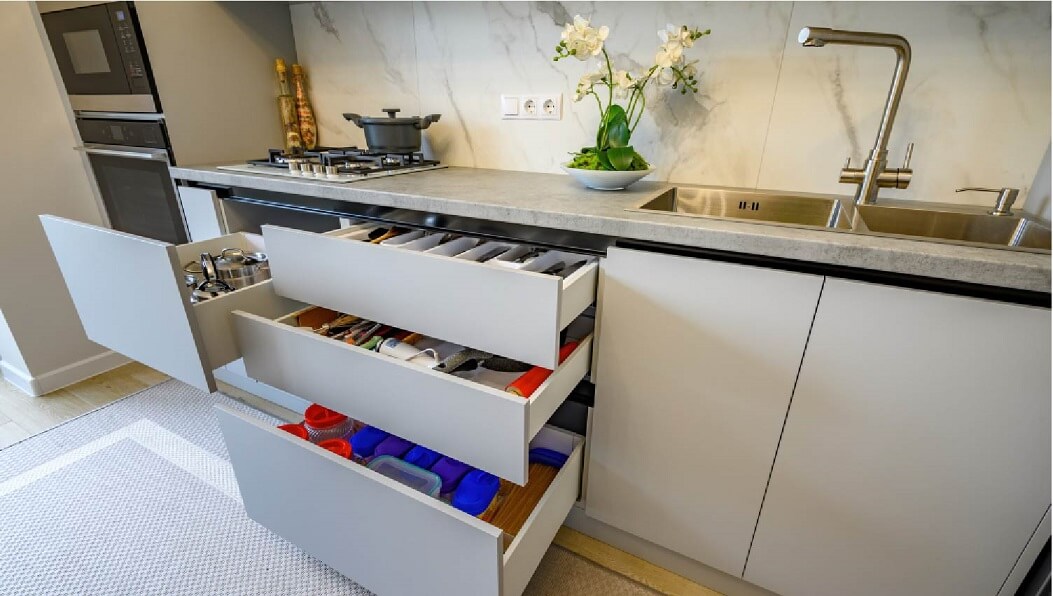
As any homeowner comes to learn, remodeling your kitchen is a learning process right from the start. You will need to consider what new cabinets will look like and what they are meant to do for you.
When we sit down with a customer to discuss the design of their kitchen, one of the first things we try and understand is how they use their kitchen. By understanding how the kitchen will be used we can design a kitchen that is functional, while looking good. Often times, when we speak with customers about their remodeling projects they put design and decor ahead of functionality. Finding a balance between decor and functionality is part of what makes a good kitchen designer.
A Little History
If we look back, before World War I, kitchens featured large freestanding tables with storage space underneath the table – somewhat like a workbench you’d find in your garage or workshop. The primary purpose of kitchen cabinets was solely functionality. It wasn’t till after World War II when kitchen cabinets began showing up in US homes. Their purpose, purely utilitarian — a place to store stuff. In the 1920s, the kitchen was often hidden away, and wasn’t a space for entertainment or family gatherings as it is now. Cabinets didn’t need to be aesthetically pleasing; they just needed to provide efficient, accessible storage for dishes, food, and cooking equipment.
As architectural and societal norms evolved, so did the role and design of cabinets. The kitchen became ‘The Heart of The Home’, a place for gathering and entertaining. This is really where design was considered in addition to functionality. As a result, the design and style of cabinets became increasingly important. People wanted cabinetry that not only served its primary purpose of providing storage but also enhanced the overall aesthetic of the kitchen, and in turn, the home. This shift marked the emergence of cabinets as a significant element in home decor. Today, while functionality remains the key factor, the style of cabinets influences the overall vibe and value of a home.
Do’s and Don’ts
The most beautiful cabinets may not be the most functional or durable, and the most robust and efficient cabinets may not align with your aesthetic preferences. Finding the balance between function and style is the key to choosing cabinets that will enhance both the value and look of your home.
Installing new cabinets shouldn’t compromise space. Kitchen cabinets should have amble shelving, drawers, door organizers, and pullouts. Accessibility within your cabinets not only increases the value of kitchen cabinetry but the space-saving aspect of practicality. They should offer as much convenience as possible. This immediately adds value to your home simply because of its well-designed functionality paired with excellent aesthetics. It also makes it easier to navigate around the kitchen and carry out duties without being slowed down searching for items stashed in some deep crevice under the sink or in a pantry.
Smaller kitchen areas don’t need to feel cramped if they are designed smartly and maximized as much as possible to provide cabinetry convenience and function. This is where custom cabinet solutions are often the best choice to fit a very unique kitchen layout. Without sacrificing the style or beauty that comes from custom cabinets, integrating storage solutions that further enhance the cabinets and drawers will be more appealing despite a limited kitchen space.
On top of all of these space-saving add-ons, it should be noted that amenities that include waste management systems are always a big plus. These further keep a kitchen tidy and clean and reduce the appearance of garbage receptacles stashed in one corner of your kitchen. When waste management solutions are built into your cabinetry, it further reduces clutter and provides your kitchen with a distinct style that isn’t interrupted visually.
Does Spending More On Cabinets Mean Greater Increase In A Home’s Final Value?
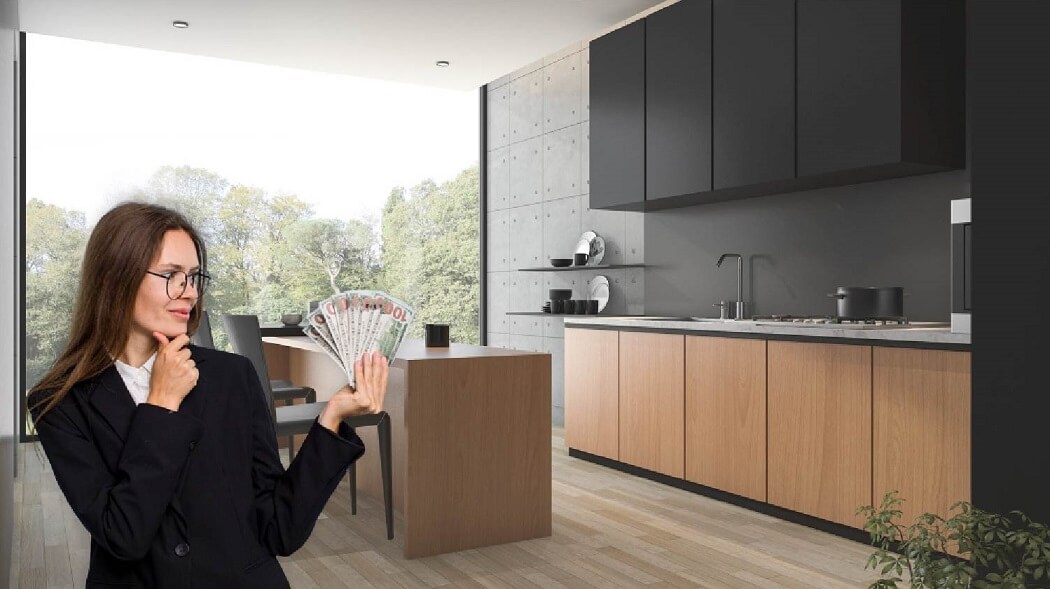
The short answer to this question is that spending more money on kitchen cabinetry does not automatically increase the value of your home. Many factors determine why value is added aside from the amount that was spent. To be honest, the real defining factor is the overall quality and style that is chosen and how they were built and installed. After this, the choice of quality materials and their functionality is added to this value.
Remember in the early 2000s, builders were constructing prefabricated homes with an over-the-top “Daddy” Warbucks style of décor, featuring expensive gaudy cabinets with ornate designs? The thought process at the time was that this type of cabinetry would help increase the value of their homes. Then the market crashed, and all these homes sat for years without being remodeled. Today, most buyers are not willing to pay a premium for such out-dated design choices, making this type of cabinetry much more difficult to resell. Not only that, the big bold cabinets put décor ahead of functionality, they rarely featured sliding racks or pull-out drawers, reducing their overall value even further.
We see kitchens all the time where a homeowner spent good money on kitchen cabinets that are overpriced, overly stylish, or too trendy, that don’t add value to the home because they lack functionality or aesthetics. Whatever the reason is, expensive cabinets aren’t a guarantee that translates to a higher return investment, if you decide to sell your home. Any custom cabinet maker will advise you that evergreen and classic cabinet styles that appear timeless are always a safe bet. You could also look to score a good deal on used cabinets to cut on overhead.
Where Design Meets Added Value
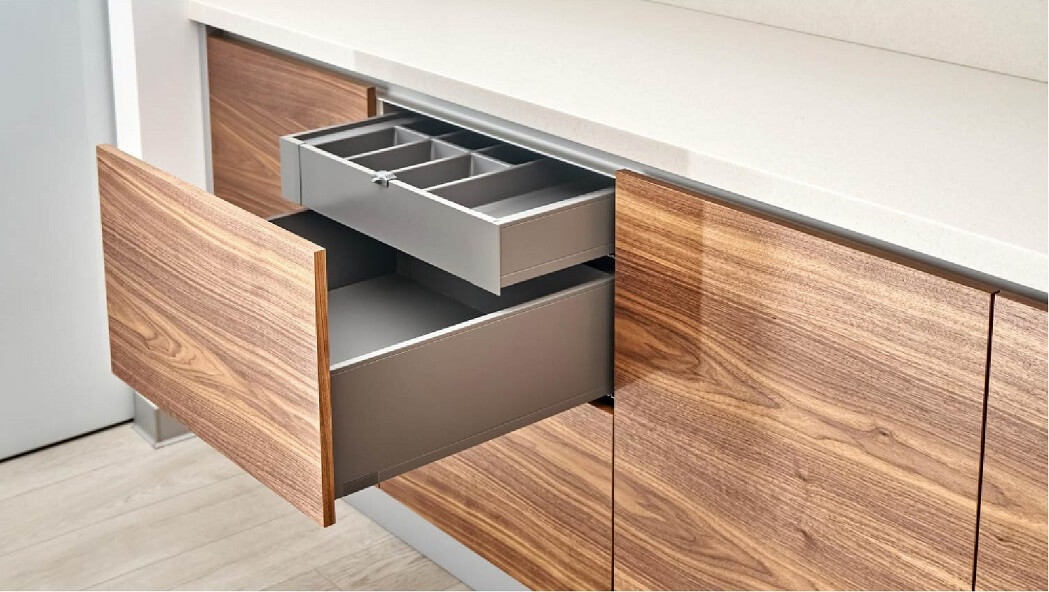
I’ve made it clear that cabinets should work for you — offering modern storage amities, quality construction and proper layout. But since today, the kitchen is ‘The Heart of the Home’ exterior detail is important. Well-designed cabinets get attention from potential buyers, so your cabinets need to be eye-catching for beauty and fine detail. This is why cabinets that have intricate detail and appealing colors can create a homey or warm atmosphere. In contrast, cabinets that that lack style, or have too much of the wrong type of style and turn buyers off. Which is why I’m big on going with classic styles that always stay popular instead of trends that seem like a good idea at the time.
Another feature that shouldn’t be overlooked is lighting. Lighting is a key aspect of a kitchen’s functionality but if integrated properly it can be used to accent and complement the kitchen’s mood and decor style. Strategic lighting will add a dramatic effect that serves to make your cabinetry appear more visually appealing. When combined with stunning cabinetry, well-placed lighting adds instant value to any new cabinetry upgrade.
For more ideas on improving your kitchen’s design as it relates to cabinetry, see this article.
Average Value Increase Of Installing New Cabinets
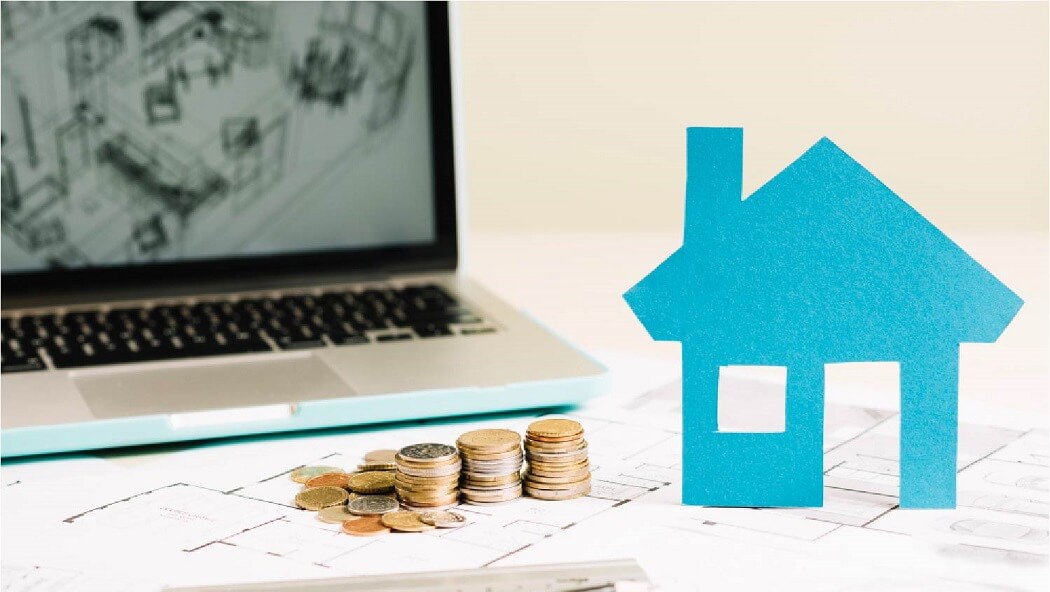
According to recent statistics on adding new kitchen cabinetry, a home’s value will increase by 10-15%. This information that comes from the National Appraisal Institute further states that the installation of new cabinets adds 1-3% of the appraisal value of a homeowner’s property. Ideally, the numbers translate better when to cost of a home is mentioned. If you have a home that is appraised at $400K, this would mean that a newly installed kitchen would be worth $4K to 12K based on the appraisal you receive for your home.
These factors are also subject to the level of quality which comes from cabinetry and helps to determine the actual value increase. An appraiser will also pay close attention to what type of cabinets you have installed (custom or stock), the layout and size of your kitchen, and even the eco-friendliness it has to offer. An appraiser will further check to see how much capacity and convenience are built into cabinets.
Obviously, you can expect that the type of wood used and construction materials make an impact, but the proper installation is one aspect an appraiser will know how to spot and inquire about. This is one more reason to not cut corners and stick with quality materials that will help to increase home value by default. This is not the only factor but obviously a combination of design, quality materials, colors and aesthetic details, and carefully planned lighting.
When considering practical lighting in combination with decorative lighting, the impact on raising the value of a home goes a long way. It’s the attention to little details that include extras such as backlit accents, toe kicker lighting, and upper cabinet and ceiling light accents. Extras also go further to include lighting for the interior of cabinets and shelves likewise. Controlled lighting and dimmers will add more charm for creating atmospheric charm.
All of these factors aren’t an exact science when it comes to increasing home value but worst case-in-scenario it can help attract more buyers when you do sell.




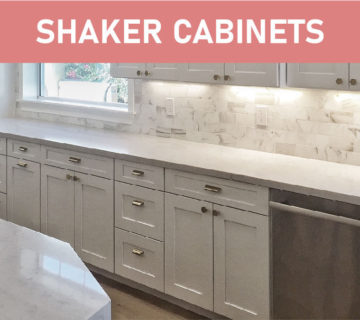
No comment